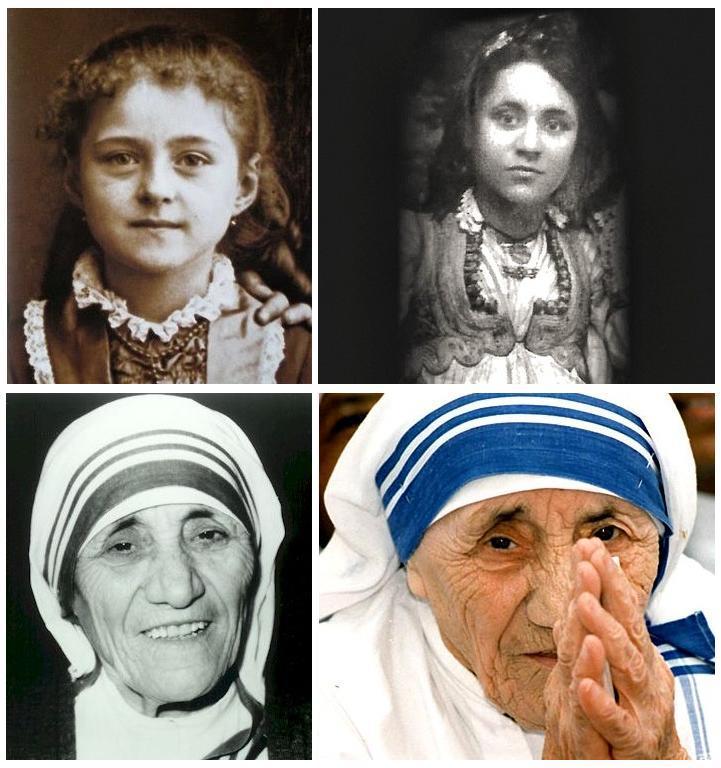Mother Teresa: A Life of Compassion and Service

Mother Teresa, born Anjezë Gonxhe Bojaxhiu, is one of the most revered figures of the 20th century, known worldwide for her unwavering dedication to the poor, sick, and dying. Her life story is one of extraordinary compassion, self-sacrifice, and humanitarianism, which inspired millions across the globe. This article explores her early life, missionary work, challenges, recognition, and lasting legacy.
Early Life and Calling
Mother Teresa was born on August 26, 1910, in Skopje, which was then part of the Ottoman Empire (now the capital of North Macedonia). She was born into an Albanian family and was named Anjezë Gonxhe Bojaxhiu. From a young age, she showed a deep sense of faith and a desire to serve others.
At 18, she left home to join the Sisters of Loreto, an Irish community of nuns with missions in India. She traveled to Ireland to learn English and then moved to Calcutta (now Kolkata), India, where she began her novitiate. Taking the name Sister Mary Teresa after Saint Thérèse of Lisieux, she became a teacher at St. Mary’s School for girls.
The Call to Serve the Poorest of the Poor
In 1946, during a train journey to Darjeeling for a retreat, Sister Teresa experienced what she called “the call within the call” — a deep spiritual experience urging her to leave the convent and live among the poorest of the poor, serving those whom society had abandoned.
In 1948, she received permission to leave the Loreto convent and began living in the slums of Calcutta. There, she began her work caring for the sick, the dying, and the destitute. She founded a new religious congregation called the Missionaries of Charity in 1950, dedicated to serving “the hungry, the naked, the homeless, the crippled, the blind, the lepers, all those people who feel unwanted, unloved, uncared for throughout society, people that have become a burden to the society and are shunned by everyone.”

Work and Impact
Mother Teresa’s Missionaries of Charity rapidly expanded from a small group of nuns to a global organization with thousands of members operating homes and hospices around the world. Their work included:
- Running hospices and homes for the dying
- Caring for leprosy patients and people with HIV/AIDS
- Operating orphanages and schools
- Providing food and medical care to the poor
Her work was characterized by profound humility, simple living, and unconditional love. She believed in seeing the face of Christ in every suffering human being.
Challenges and Criticisms
Despite widespread admiration, Mother Teresa’s work was not without controversy. Critics questioned:
- The quality of medical care in her hospices, suggesting inadequate facilities.
- The emphasis on suffering and acceptance of pain rather than aggressive medical intervention.
- Financial transparency and the use of donations.
- Her conservative views on abortion, contraception, and family planning.
While these critiques generated debate, many argued that her spiritual mission transcended conventional measures of medical or organizational success.
Recognition and Awards
Mother Teresa received numerous prestigious honors worldwide in recognition of her humanitarian work, including:
- Nobel Peace Prize (1979): Awarded for her work “in bringing help to suffering humanity.”
- Bharat Ratna (1980): India’s highest civilian award.
- Honorary citizenships and awards from countries around the globe.
Her speeches and writings often emphasized peace, love, and the dignity of every human life.
Later Years and Canonization
Mother Teresa continued her work well into old age, despite health challenges. She passed away on September 5, 1997, in Calcutta.
In 2003, Pope John Paul II beatified her, giving her the title “Blessed Teresa of Calcutta.” Later, on September 4, 2016, Pope Francis canonized her as Saint Teresa of Calcutta, declaring her a saint and recognizing her as a model of Christian charity.
Legacy
Mother Teresa’s legacy lives on through the Missionaries of Charity, which continues to operate in over 130 countries. Her life remains a powerful symbol of selfless service and compassion.
Her influence extends beyond religion, inspiring humanitarian organizations and individuals committed to alleviating human suffering. Her story challenges people to recognize the dignity of every person, especially those marginalized or forgotten by society.

Conclusion
Mother Teresa’s life is a testament to the power of faith-driven service and compassion. From humble beginnings in Skopje to global recognition, she dedicated her entire life to serving humanity’s most vulnerable. Despite controversies, her unwavering commitment to the poorest of the poor has left an indelible mark on the world, inspiring countless people to serve with love and humility.




